Crusader Kings 3: Council and court
On this page of the Crusader Kings 3 guide you will find a description and tips about the council and court rules in the game.
Last update:
It can be said that schemes are a way of doing politics without using the military. In Crusader Kings 3, schemes mechanics play a similar role. By using it, you will be able to influence other characters to achieve your goals. From this page, you will learn how to use schemes and about their types, what the secrets and hooks are, and how to use them.
How to use schemes?

After opening the schemes window (1), you will see two tabs: Schemes - 2 and Hooks and Secrets - 3. Of course, the schemes tab allows you to manage schemes and is divided into 3 types: Hostile Schemes - 4, Personal Schemes - 5, and Discovered Secret Schemes - 6. Hostile Schemes and Personal Schemes are two types of schemes that you can use against other characters. Discovered Secret Schemes is a list of other characters' schemes your spymaster has found out. Not every scheme discovered is aimed against your character. Often they simply involve people in your court, so you do not always need to intervene - although it is always worth observing the situation.
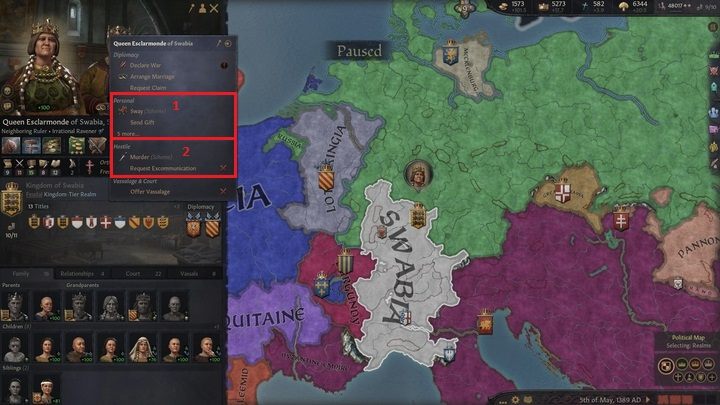
To start a scheme, you first have to decide who will be the target. Then open the window of the selected character and right-click on its portrait. In the context menu, you will see Personal (1) and Hostile (2) sections, which include personal and hostile schemes, respectively.
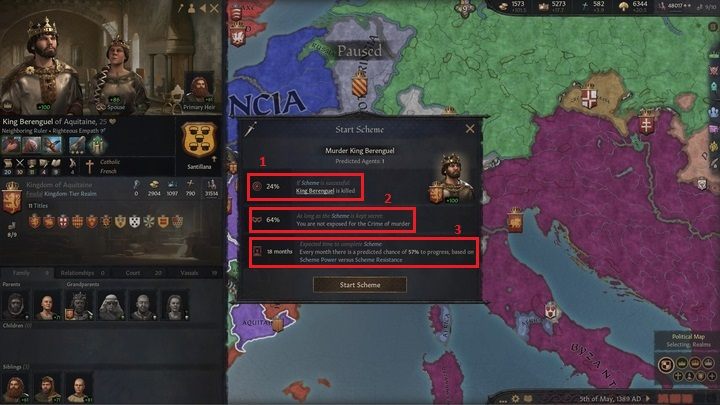
After selecting the scheme you are interested in, you will see a window with information about it. Each has a predicted chance of success (1 - Predicted Success Chance), which is described as a percentage. Initially, this value can be very low (minimum 5%) but remember that after starting the scheme, you will be able to take actions that will increase its chances of success. Below you will find information about the Predicted Secrecy - 2. It determines how difficult it will be to detect a conspiracy and link it to you. Of course, exposing your hostile scheme will have a negative consequence (more on that below), so the higher the predicted secrecy, the better. Also, this indicator may change as a result of your actions after starting the scheme. Predicted Secrecy doesn't involve personal schemes, as they are led openly. At the very bottom (3), you will find information about how long it will take to complete the scheme. To start it, click the Start Scheme button.
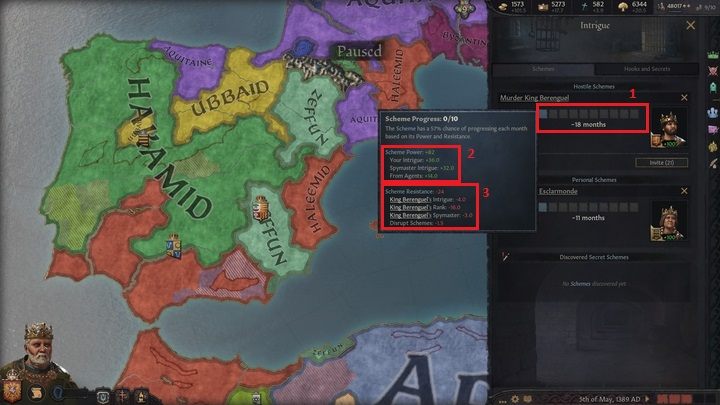
After that, the scheme will appear in the scheme window. You will find a progress bar there (1), which measures the time needed to complete it. When you hover your cursor over it, you will see information about Scheme Power - 2 and Scheme Resistance -3. Both of these indicators affect how quickly the scheme will be prepared. Below each of them, you will find information about what exactly affects them. The intrigue skills of your character, your spymaster, the targeted character, and their spymaster influence these stats greatly. Other factors, such as the agents or the rank of the target character, may also have an impact.
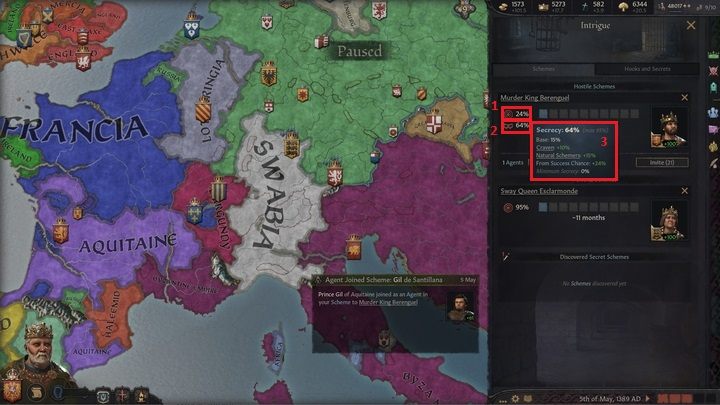
In the scheme window, you will also find the Success Chance - 1 and Secrecy - 2 of the schemes you are plotting. After hovering the cursor over them, you will be able to see what exactly affects these values (3). In the case of personal schemes, the situation is similar, with the difference that the Secrecy indicator does not apply here.
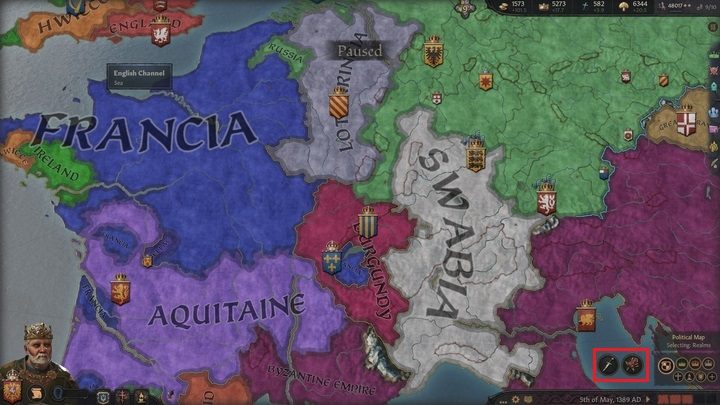
After starting the scheme, you will be able to track its progress not only through the scheme window but also with special icons in the lower right corner of the screen. Under normal circumstances, your character can run one hostile and one personal scheme at once. The Twice Schemed perk from the Schemer tree allows you to run two hostile schemes at the same time. However, it is impossible to simultaneously engage in hostile and personal intrigue targeted at the same character.
You are not permitted to copy any image, text or info from this page. This site is not associated with and/or endorsed by the Paradox Interactive or Paradox Development Studio. All logos and images are copyrighted by their respective owners.
Copyright © 2000 - 2025 Webedia Polska SA for gamepressure.com, unofficial game guides, walkthroughs, secrets, game tips, maps & strategies for top games.
